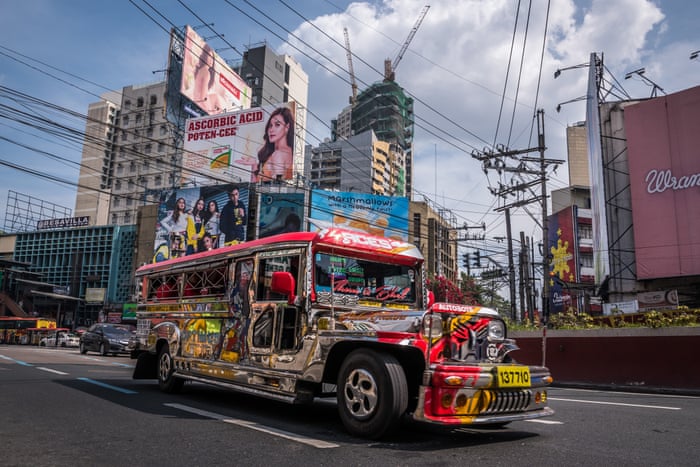Transit Advertising Philippines for Unmatched Brand Name Presence
Wiki Article
A Thorough Evaluation of the Approaches and Strategies for Successful Transit Marketing Campaigns
Transit advertising projects offer a distinct opportunity for brand names to engage with varied target markets in dynamic settings. As we explore these important components, it becomes clear that the course to an impactful transportation advertising and marketing technique is both complex and fulfilling, raising the inquiry of exactly how finest to browse these intricacies for optimal brand visibility.Comprehending Target Demographics
Comprehending target demographics is vital for the success of transportation marketing campaign (Transit Advertising Philippines). Identifying details target market sectors makes it possible for advertisers to customize their messages properly, making sure that the web content resonates with the intended customers. This strategy improves engagement and optimizes return on financial investmentTo effectively evaluate target demographics, online marketers have to take into consideration a number of crucial aspects, including age, revenue level, occupation, and lifestyle preferences. For example, a campaign targeted at young specialists may concentrate on ease and modernity, while one targeting families could highlight security and dependability. Moreover, geographical elements such as country versus metropolitan settings can significantly affect customer habits and preferences.
Data collection approaches such as studies, emphasis groups, and social media analytics give valuable understandings into market trends and customer practices. By leveraging this info, advertisers can craft engaging stories that straighten with the values and requirements of their target market.
Eventually, recognizing target demographics not only educates the strategic direction of transportation marketing campaign yet additionally ensures that sources are assigned efficiently. This targeted method enhances the chance of accomplishing campaign objectives, promoting brand commitment, and driving conversions.
Innovative Layout Methods
Reliable communication with target demographics relies heavily on ingenious creative style strategies in transit marketing projects. To properly catch interest in a congested aesthetic environment, designers have to focus on quality and aesthetic impact. Utilizing bold shades and high-contrast components can enhance presence, guaranteeing that messages are easily understandable from a range.Including vibrant imagery that resonates with the target audience is critical. Aesthetic storytelling strategies can stimulate emotions and create unforgettable organizations with the brand name. Furthermore, critical use typography assists communicate essential information swiftly; proper dimensions and readable fonts even more improve readability.
Integrating interactive components, such as QR codes or increased fact attributes, can involve travelers past easy observation (Transit Advertising Philippines). These techniques not only promote user interaction but likewise connect the space between conventional marketing and digital interaction
Furthermore, using space creatively-- whether on bus wraps, transit sanctuaries, or metro advertisements-- can bring about cutting-edge formats that damage the mold and mildew of conventional advertising and marketing. By embracing creative imagination while preserving brand name consistency, campaigns can cultivate a solid link with their audience, ultimately driving both awareness and activity. The combination of these design techniques is paramount for achieving effective transit advertising end results.
Strategic Positioning Techniques
Making the most of the impact of transportation advertising and marketing rests on calculated placement methods that guarantee optimum presence and involvement. Reliable positioning includes recognizing and evaluating high-traffic areas passenger demographics to identify the most beneficial places for ad display screens. As an example, positioning advertisements near entryways and leaves of transit vehicles can catch the attention of boarding and touching down passengers, therefore enhancing direct exposure.Furthermore, making use of both exterior and navigate to this website interior surfaces of transit vehicles can significantly widen reach. Exterior ads, noticeable throughout commutes, engage pedestrians and other vehicle drivers, while indoor advertisements target travelers in a captive environment. Furthermore, positioning advertisements en route centers, such as bus terminals or train stations, enables raised impressions as travelers change between different modes of transportation.
Timing is additionally important; straightening the campaign launch with peak traveling periods optimizes target market engagement - Transit Advertising Philippines. Additionally, leveraging electronic displays in transportation settings can facilitate dynamic content, supplying real-time updates and boosting user interaction. By utilizing these critical positioning approaches, marketing experts can ensure that their transit marketing campaign accomplish maximum exposure, resonate with the target audience, and eventually drive preferred outcomes

Determining Project Efficiency
To examine the success of transportation marketing campaign, it is important to use a selection of dimension methods that supply insights into audience involvement and overall performance. One primary approach is using key performance indications (KPIs), such as reach, impressions, and engagement prices, which evaluate how numerous people watched the ad and engaged with it.Surveys and emphasis groups can likewise contribute in gauging consumer assumptions and recall, allowing marketing experts to comprehend the effect of their messaging. Additionally, tracking site web traffic and social media interaction during and after the campaign assists measure straight reactions to the marketing.
One more effective strategy is making use of location-based analytics, which can supply data on foot web traffic around particular transit locations, providing understandings into whether the project successfully caught the attention of travelers. Furthermore, assessing sales data can expose connections in between transportation advertising and increased profits, giving concrete evidence of a campaign's effectiveness.
Study of Success
Comprehending the performance of transit ad campaign through measurement strategies lays the groundwork for taking a look at real-world examples that highlight successful outcomes. One notable study involves a nationwide drink brand name that used bus wraps in urban areas. The project intended to boost brand internet presence and sales during the summer season months. By using geo-targeted digital advertisements and analytics, the brand name measured a 30% rise in sales in regions where the wraps were prominently displayed, demonstrating the straight impact of transportation advertising and marketing.One more engaging instance originates from a neighborhood not-for-profit organization that released a project on subway systems to promote a websites community occasion. The company incorporated vivid visuals with QR codes routing travelers to a registration page. Post-campaign analysis disclosed a 50% rise in occasion participation compared to the previous year. Using direct engagement via modern technology intensified the project's reach and efficiency.

Final Thought
In summary, effective transportation advertising and marketing projects demand a comprehensive method that integrates an understanding of target demographics, ingenious layout strategies, and critical positioning. Jointly, these strategies foster brand presence and take full advantage of the return on investment in transportation advertising initiatives.Understanding target demographics is essential for the success of transit marketing campaigns.Efficient communication with target demographics relies heavily on innovative creative layout strategies in transportation advertising and marketing projects. By using these critical positioning techniques, marketers can make certain that their transportation marketing campaigns achieve maximum presence, reverberate with the target audience, and eventually drive desired outcomes.
Recognizing the effectiveness of transportation advertising projects via dimension methods lays the groundwork for taking a look at real-world instances that show successful end results.In recap, successful transit advertising and marketing projects necessitate a comprehensive strategy that incorporates an understanding of target demographics, innovative layout methods, and tactical positioning.
Report this wiki page